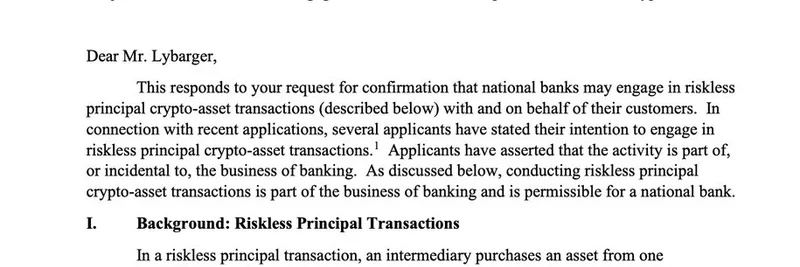In the wild world of crypto, where one server hiccup can send markets into a frenzy, Chainlink just flexed its decentralized muscles like a boss. While a massive AWS outage on October 20, 2025, left giants like Coinbase scrambling and protocols like LayerZero offline, Chainlink's oracle network? Business as usual. No drama, no downtime—just reliable data feeds powering billions in DeFi value. If you're knee-deep in meme tokens or serious blockchain builds, this story is a reminder: decentralization isn't just buzzword bingo; it's your outage-proof shield.
The AWS Meltdown: A Wake-Up Call for Centralized Dependencies
Picture this: It's October 19, and a sneaky bug in AWS's health-check system for network load balancers in the US-EAST-1 region starts unraveling like a bad domino chain. By the next day, 113 AWS services—including powerhouses like EC2, Lambda, and DynamoDB—are gasping for air. DNS routing goes haywire, and the ripple effects? Epic.
Non-crypto casualties included Snapchat freezing mid-snap, Ring doorbells ghosting users, and even Fortnite lobbies turning into digital ghost towns. Venmo transfers stalled, and anime binges on Crunchyroll hit pause. Over in crypto land, the pain was real: Coinbase had to temporarily halt trading and withdrawals, citing the outage as the culprit. Cross-chain bridge LayerZero? Completely down, stranding transactions in limbo. And Kasplex in the Kaspa ecosystem? Their AWS-hosted Cassandra databases crapped out, forcing an emergency node migration just to get back online.
It was a humbling moment for anyone betting big on centralized cloud infra. As one X user quipped in the aftermath, "Centralization: because who needs redundancy when you can have a single point of failure?" Oof. But amid the chaos, Chainlink emerged as the unflappable hero.
Chainlink's Decentralized Edge: No Single Point of Surrender
Here's where Chainlink shines—and why it's a blueprint for any blockchain project, meme-driven or not. Unlike those reliant on AWS's vast (but vulnerable) ecosystem, Chainlink's oracle network is built like a global relay race: no one runner carries the baton alone.
At its core, Chainlink connects smart contracts to real-world data via a network of independent node operators—think heavy hitters like Deutsche Telekom and Swisscom. These nodes are spread across geographies and tap multiple infrastructure providers, not just AWS. Add in redundancies like decentralized off-chain consensus (DONs for short—fancy talk for nodes double-checking each other without a bossy central server) and native on-chain data delivery (no sketchy third-party bridges needed), and you've got a system that's tough to knock down.
The result? During the outage, Chainlink's data feeds, data streams, and Cross-Chain Interoperability Protocol (CCIP) chugged along uninterrupted. As Chainlink posted on X that day: "Chainlink remains fully operational." Mic drop. This isn't hype—it's battle-tested. Just weeks earlier, on October 10, Chainlink handled a brutal flash crash, delivering spot-on price data for over $100 billion in DeFi liquidations without breaking a sweat.
The Stakes: Billions Secured, Trillions Transacted
Let's talk numbers, because in crypto, they don't lie. Chainlink currently secures about $100 billion in DeFi markets—that's lending platforms like Aave relying on it for everything from price oracles to surplus value recapture (a nifty trick to claw back max extractable value, or MEV, during volatile swings). Over its lifetime, Chainlink has enabled more than $26 trillion in transaction value. And with certifications like ISO 27001 for info security and SOC 2 Type 1 for trust services, it's not just reliable; it's institutional-grade.
For meme token degens and builders alike, this matters. Imagine your favorite dog-themed coin's liquidity pool glitching because of a cloud outage—yikes. Chainlink's resilience means smoother sails for everyone plugged into its ecosystem, from yield farms to wild NFT drops.
Memes, Community Vibes, and the Bigger Lesson
Of course, no crypto event is complete without memes. Post-outage, X lit up with Chainlink stans dunking on the fallen: "When AWS goes down but you're too decentralized to care" paired with a chill frog image. Another gem? "Just use Chainlink" became the unofficial rally cry, echoing through threads like the one from BSCNews. It's peak crypto humor—turning tech fails into teachable (and shareable) moments.
At the end of the day, this AWS fiasco was a stress test crypto needed. It spotlighted the pitfalls of over-reliance on big tech and championed truly distributed designs. For blockchain practitioners chasing the next meme moonshot or fortifying DeFi protocols, Chainlink's story screams: Build redundant, stay sovereign. In a space where volatility is the only constant, that's not just smart—it's survival.
What do you think—time to audit your stack for outage vulnerabilities? Drop your takes in the comments, and keep an eye on Meme Insider for more no-BS breakdowns on the tokens and tech shaking up the chain.



